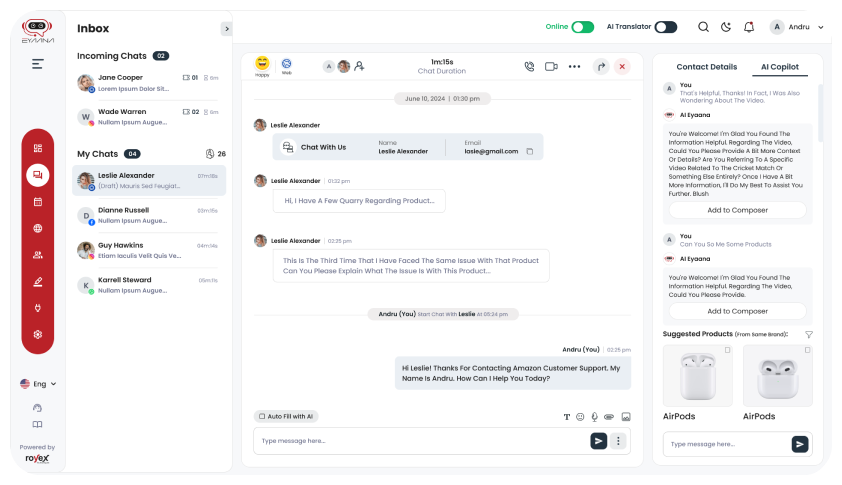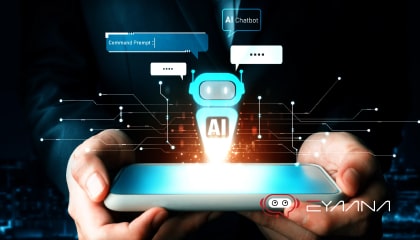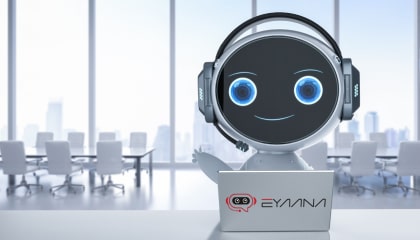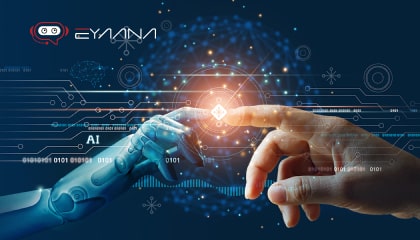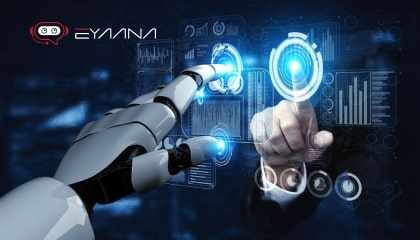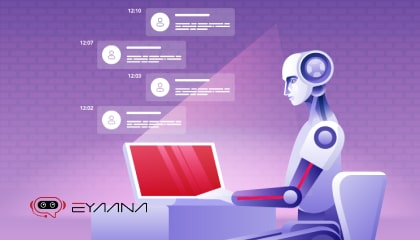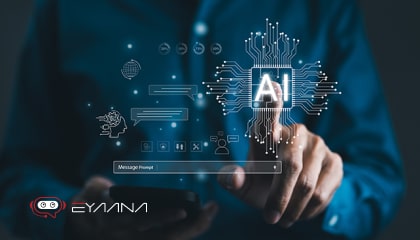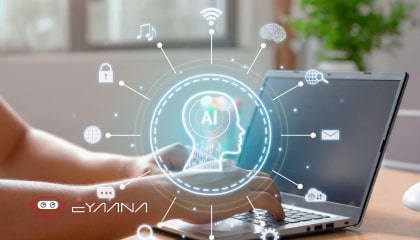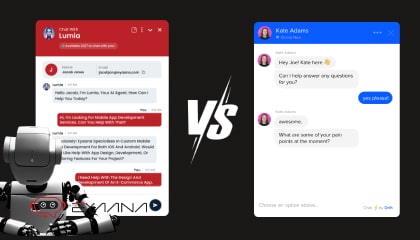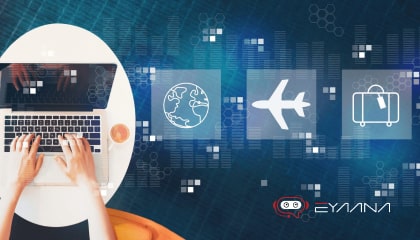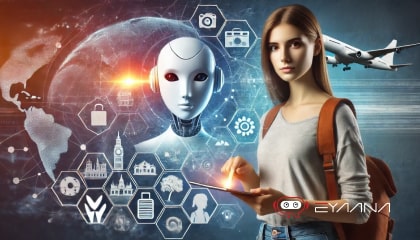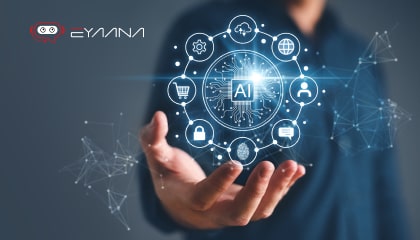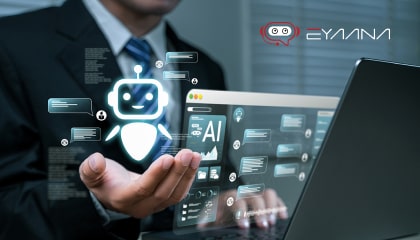Enquiry
Blog Details
Can AI Chatbots Reduce Customer Service Response Time?
Customer service plays a vital role in shaping a customer’s experience with a brand. When customers have questions, concerns, or problems, they expect prompt and helpful responses. In today’s fast-paced world, a delay in addressing customer inquiries can lead to dissatisfaction and, ultimately, loss of business. For companies that receive large volumes of inquiries daily, relying solely on human agents to manage all interactions can be overwhelming. This not only increases response times but also creates stress for agents, impacting their efficiency and the overall quality of service. Addressing this challenge has become a priority for businesses aiming to stay competitive and retain customer loyalty.
This is where AI chatbots emerge as game-changers. Leveraging artificial intelligence, these chatbots are designed to manage customer interactions swiftly and effectively, providing answers in real-time. Unlike human agents, chatbots can handle multiple inquiries simultaneously, offering consistent responses around the clock. By streamlining customer service operations, AI chatbot app enhance the overall experience for both customers and businesses. In this article, we’ll dive into how AI chatbots reduce response times, the benefits they bring to organizations, and some potential challenges businesses should keep in mind when implementing this technology.
What Are AI Chatbots?
Before we explore the impact of AI chatbots on response times, let's first understand what they are. AI chatbots are computer programs powered by artificial intelligence that can communicate with customers via text or voice, much like a human representative would. These bots are trained to understand customer queries, provide answers, and even carry out actions like processing orders or making recommendations.
Chatbots use natural language processing (NLP) to understand and interpret the questions or requests posed by customers. With this technology, chatbots can engage in meaningful conversations, respond quickly, and offer solutions in real time.
How AI Chatbots Reduce Response Time
![how-ai-chatbots-reduce-response-time-min[1].jpg](/media/jrqna2mr/how-ai-chatbots-reduce-response-time-min-1.jpg)
Now, let's look at the various ways AI chatbots reduce the time it takes for customers to get answers and assistance:
1. Instant Response 24/7
One of the most obvious ways AI chatbots reduce customer service response time is by providing instant replies. When a customer reaches out, the chatbot can respond immediately, no waiting in line or being put on hold. Unlike human agents who may be occupied with other customers or only available during certain hours, chatbots are always on, providing around-the-clock service.
This immediate response time can be especially beneficial during peak times when call centers are overwhelmed with inquiries. Customers don’t have to wait in long queues or deal with wait times—chatbots handle queries as soon as they come in.
Example: A customer reaches out to a website at 10 PM with a question about a product’s availability. An AI chatbot can instantly provide the answer, while a human agent might only be able to respond the next day.
2. Handling Multiple Requests Simultaneously
Unlike human agents, who can only handle one customer at a time, AI chatbots can manage multiple conversations at once. This ability to handle dozens, or even hundreds, of inquiries simultaneously greatly reduces customer wait times. In situations where a business has a high volume of inquiries, AI chatbots can ensure that no customer has to wait in line, thus speeding up the response process for everyone.
Example: During a sale event, when thousands of customers are visiting a website, an AI chatbot can respond to each customer instantly, providing product details, handling order inquiries, and even processing returns, all at the same time.
3. Automating Routine Tasks
Many customer service inquiries are routine and repetitive, such as checking order status, providing tracking information, or answering frequently asked questions (FAQs). AI chatbots can take over these tasks and instantly provide the information customers need without involving human agents. This means that customers don’t have to wait for an agent to free up time to handle these simple requests.
For example, when customers ask a chatbot about their order status, the bot can quickly access order details from the database and provide the answer, eliminating the need for customers to wait for a human agent to look up the information.
Example: If a customer asks, "What is the status of my order?" the chatbot can instantly check the order database and reply, “Your order is on the way and will arrive tomorrow,” all without the customer having to wait for a human to process the request.
4. Handling Complex Queries Faster with Pre-Defined Responses
AI chatbots are designed to handle a wide range of customer queries, from basic questions to more complex problems. Chatbots can be programmed with pre-defined responses and solutions for the most common issues customers face. This allows them to resolve many problems without any delay, even if the customer’s issue is a bit more detailed.
If a query is too complicated for the chatbot to handle, it can instantly route the customer to the right human agent. However, even in these cases, the chatbot can collect relevant information beforehand, such as the customer’s issue, account details, or recent interactions, allowing the human agent to address the issue more quickly and effectively.
Example: A customer might ask about a refund process. The chatbot can provide detailed instructions on how to return a product and process the refund request, saving the customer time in receiving the information.
5. Personalized Customer Experience
AI chatbots can personalize the conversation based on previous interactions or customer data. By remembering past interactions, chatbots can answer questions faster and more accurately, as they don’t have to ask for the same information repeatedly. This reduces the time customers spend explaining their issues, leading to a quicker resolution.
Example: If a customer has previously asked about a specific product, the chatbot can immediately offer updates or answer follow-up questions related to that product, without requiring the customer to start from scratch.
6. Efficient Routing to the Right Department
AI chatbots can also direct customers to the right department or specialist quickly. If the chatbot is unable to solve the problem, it can instantly transfer the conversation to the appropriate human representative, providing them with all the necessary context about the issue. This ensures that the customer doesn’t need to explain their situation multiple times and can get the help they need faster.
Example: If a customer is asking about a billing issue, the chatbot can transfer the inquiry directly to the billing department, along with the customer’s details and previous interactions, so the agent can begin resolving the issue immediately.
7. Reduced Waiting Time for Humans
By handling simple and repetitive tasks, chatbots free up human agents to focus on more complex and high-priority issues. As a result, human agents can work more efficiently, reducing the amount of time customers need to wait to speak with a representative. Since the chatbot is already filtering out the straightforward queries, the agents can focus on issues that require more attention.
Example: A customer calls into a call center with a technical issue. The chatbot has already assessed the problem and gathered the necessary details, allowing the human technician to dive straight into solving the problem rather than asking for basic information.
Benefits of Faster Response Times with AI Chatbots
1. Improved Customer Satisfaction
Fast responses show customers that their time is valued, leading to better experiences. Satisfied customers are more likely to remain loyal to your business and recommend it to others.
2. Higher Efficiency
By handling simple queries, AI chatbots free up human agents to focus on more complex issues. This ensures that all queries are resolved more quickly.
3. Cost Savings
Faster response times mean fewer agents are needed to handle the same volume of inquiries. This can significantly reduce labor costs for businesses.
4. Increased Sales Opportunities
When customers get answers quickly, they’re more likely to complete purchases. For example, if a chatbot helps a customer choose the right product, it can lead to a sale.
5. Scalability
AI chatbots can handle an unlimited number of conversations, making them perfect for businesses experiencing rapid growth or high volumes of customer interactions.
How to Maximize the Impact of AI Chatbots
![how-to-maximize-the-impact-of-ai-chatbots-min[1].jpg](/media/4xuh3plo/how-to-maximize-the-impact-of-ai-chatbots-min-1.jpg)
To ensure AI chatbots deliver the best results and reduce response times effectively, businesses should:
-
Focus on Training the Chatbot: Use real customer interactions to train the chatbot, ensuring it understands the most common queries and provides accurate responses.
-
Integrate with Other Tools: Connect the chatbot to your CRM, inventory system, and other tools to provide seamless and accurate responses.
-
Provide a Smooth Handoff: Ensure customers can easily switch to a human agent if needed. Chatbots should be able to transfer all relevant details to the agent to avoid delays.
-
Regularly Update the Chatbot: Keep the chatbot up-to-date with new information, FAQs, and company policies to ensure it continues to perform well.
-
Monitor and Improve Performance: Track metrics like average response time, resolution time, and customer satisfaction to identify areas for improvement.
How Can Eyaana Help You Reduce Customer Service Response Time?
Eyaana is an ideal solution for reducing customer service response times by utilizing AI-powered automation to manage and resolve customer queries instantly. The AI agent handles routine inquiries efficiently, providing customers with immediate responses, which greatly reduces wait times and enhances the overall customer experience. This approach not only speeds up response times but also ensures that customers receive consistent, accurate information, improving customer satisfaction across multiple channels. Additionally, Eyaana's AI continuously learns from interactions, optimizing its performance over time for even faster and more effective support.
Furthermore, Eyaana integrates seamlessly with human agents, allowing for a smooth transition when complex issues arise. This hybrid model ensures that routine queries are handled swiftly by AI, while more sensitive or intricate matters are addressed by human agents, maintaining high service quality. The platform's 24/7 availability and scalability also ensure that customers receive quick responses at any time, regardless of time zones. By combining these features, Eyaana significantly reduces response times, optimizes support efficiency, and elevates the overall customer service experience.
Conclusion
In conclusion, AI chatbots can significantly reduce customer service response times by providing instant answers, handling multiple inquiries simultaneously, automating routine tasks, and personalizing the experience. They ensure that customers don’t have to wait in long queues and help businesses deliver quicker, more efficient support.
With AI chatbots in place, businesses can improve their customer service efficiency, increase customer satisfaction, and reduce operational costs. It’s clear that chatbots are not just a tool for businesses—they are essential for providing the speed and quality of service customers expect in the modern digital age.
If you're considering implementing an AI chatbot to reduce response time and improve customer service, Eyaana, customer service software is an excellent choice. With its advanced AI capabilities, Eyaana can help businesses deliver faster and more efficient customer support, ensuring that both customers and companies benefit from quicker response times and better experiences.
To explore how AI can enhance your business operations, sign up for free and get started with Eyaana today.
Do you need help?
We will provide detailed information about our services, types of work, and top projects. We will calculate the cost and prepare a commercial proposal.
